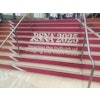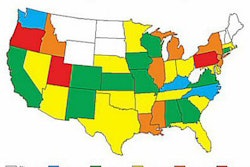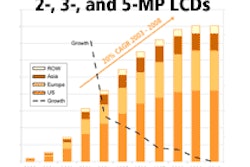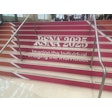A Dutch radiologist who attended the 2004 RSNA meeting in Chicago has contracted Legionella pneumonia, according to an advisory e-mail from the Netherlands Society for Radiology (NVvR).
The case was confirmed by Dr. Rob Wintermans, a medical microbiologist at Lievensberg Hospital in Bergen op Zoom, according to the advisory. Wintermans did not immediately respond to a request for further details; however, Dr. Rutger Cohen, secretary general and chief administrator of the NVvR in Hertogenbosch, the Netherlands, confirmed that the society had sent the e-mail regarding the case.
The e-mail was dated December 15, and stated that the radiologist "very probably" contracted Legionella pneumonia during the meeting. The e-mail asked society members to pass the news on, and warned that more cases possibly could develop.
Legionnaires' disease is a severe and sometimes fatal form of pneumonia that tends to occur in people with reduced resistance to infection. Its incidence has been estimated as high as 100,000 cases a year in the U.S., but is thought to be falling thanks to improved monitoring of building air-conditioning and cooling systems, which can harbor the offending pathogen.
The causative agent in more than 80% of the cases is Legionella pneumophilia, a motile rod-shaped gram-negative aerobic bacterium considered to be a facultative parasite. Since 1977, 41 species of Legionella pneumophilia containing 62 serogroups have been characterized, according to an informational Web site on Legionnaire's disease.
Symptoms may include muscular and abdominal pain, fatigue, headaches, a dry cough, and diarrhea. If left untreated, additional symptoms such as shortness of breath, high fever, or occasional delirium, as well as the coughing up of a thick phlegm, may appear within a few days. Antibiotics, administered orally or intravenously, are usually sufficient to eliminate the symptoms.
The first outbreak shocked the U.S. and the world back in 1976, when elderly men attending an American Legion convention in Philadelphia began mysteriously falling ill, and 29 of them died. The pathogen, named for the meeting where it was discovered, was eventually traced to the Philadelphia hotel's cooling tower.
"Possibly more cases are present," Dr. Wintermans wrote in his advisory e-mail. "In that case, a warning is usually welcome."
By AuntMinnie.com staff writers
December 21, 2004
Copyright © 2004 AuntMinnie.com



















